Hokkaido, Japan’s Awesome Northernmost Destination
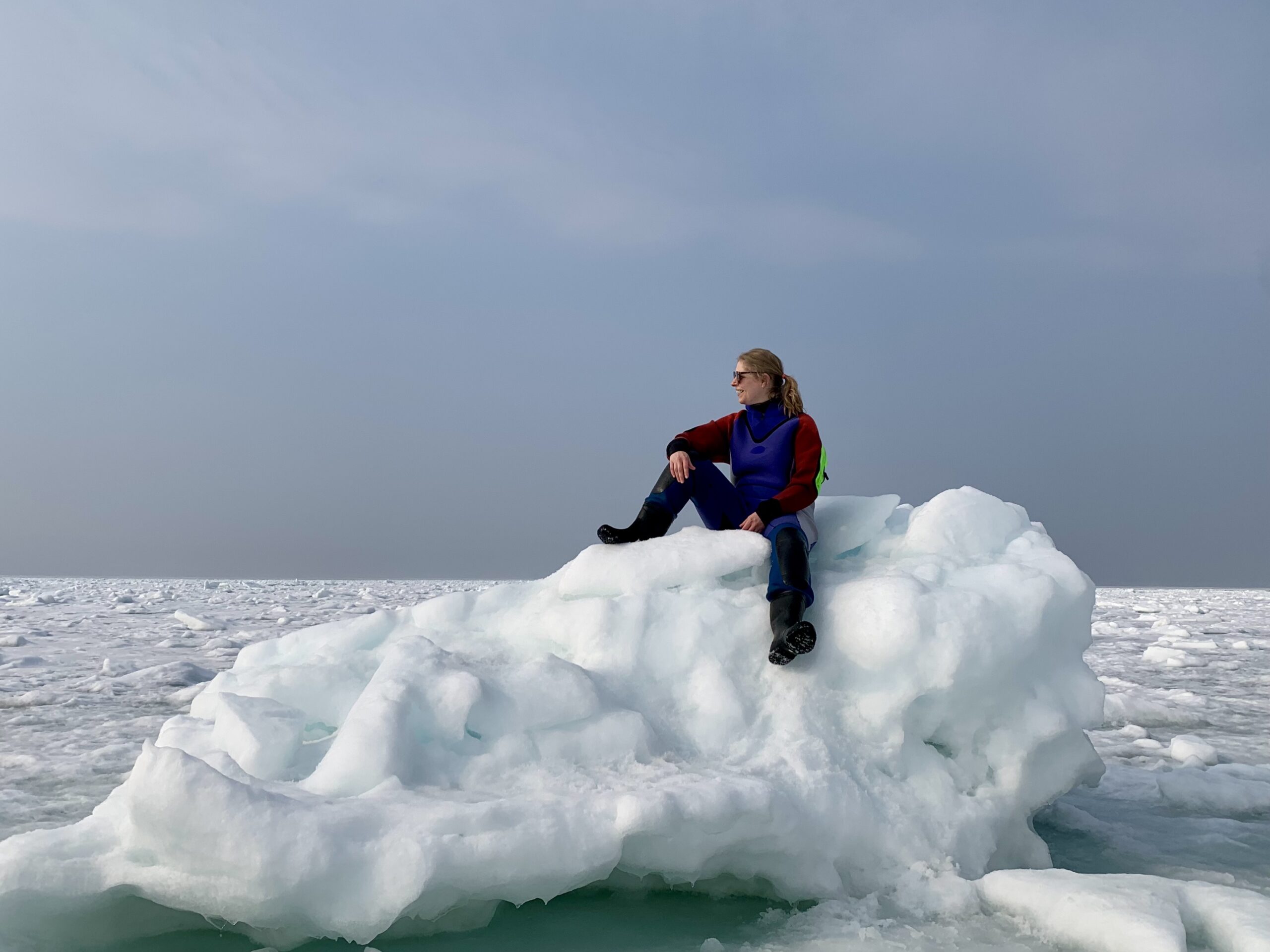

Written by
Name: Stephanie
Country of origin: USA
How long you’ve lived in Japan: 6 years
Where you live in Japan: Tokyo (and 1 year in Gunma)
Instagram
Today’s post is all about Hokkaido (北海道), Japan’s largest and northernmost prefecture. It’s a real winter wonderland in winter and a cool alternative to mainland Japan in summer. Best of all, many areas of Hokkaido aren’t suffering from overtourism, so the locals are happy to talk to visitors! I’ve been to Hokkaido three times, once in summer and twice in winter, so I’m excited to share all about Hokkaido with you!
Intro to Hokkaido
Japan’s largest and most northern prefecture is full of beautiful nature and fascinating history. It’s sort of like Japan’s last frontier, so it’s not unlike Texas or Alaska in regards to size and nature. It’s stunning any season, with winter being a snowy beauty, summer being not too humid, and spring and autumn being breathtaking as well. Hokkaido is known for having fresh food, bounties of the natural geography and weather, so be sure to eat some produce, potatoes, and dairy. Jingisukan is a local specialty which is basically yakiniku (grilled meat) lamb, and soup curry and ramen are famous especially in Sapporo. The seafood is also extremely fresh, so sushi, sashimi, and crab are a no-brainer. Let’s talk about some cities and sites you can see.
Sapporo and Nearby
The main city Sapporo (札幌) is a nice medium-size city with awesome nightlife and great access to nature and skiing. There’s a lot to do in the city, and it’s largely walkable. The Sapporo Snow Festival (さっぽろ雪まつり) in February is truly unbelievable, but there’s a lot to do during any season. I’ll leave most of the downtown activities out since this post would get too long too fast, but the official tourism link is below.
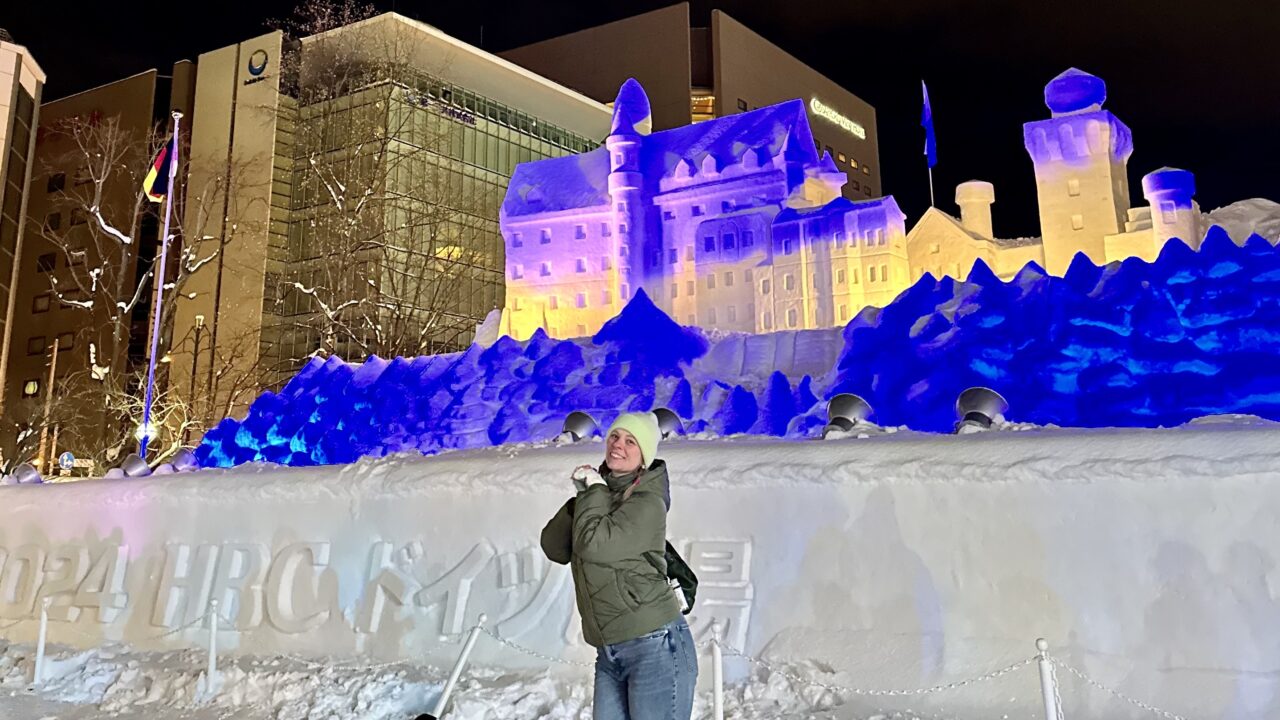
The Hill of the Buddha (頭大仏殿) is within Sapporo city limits and is accessible by bus. It’s a breathtaking white Buddha statue built into a hill. It’s lovely any season (I went in summer), but keep an eye out for lavender and snow season.
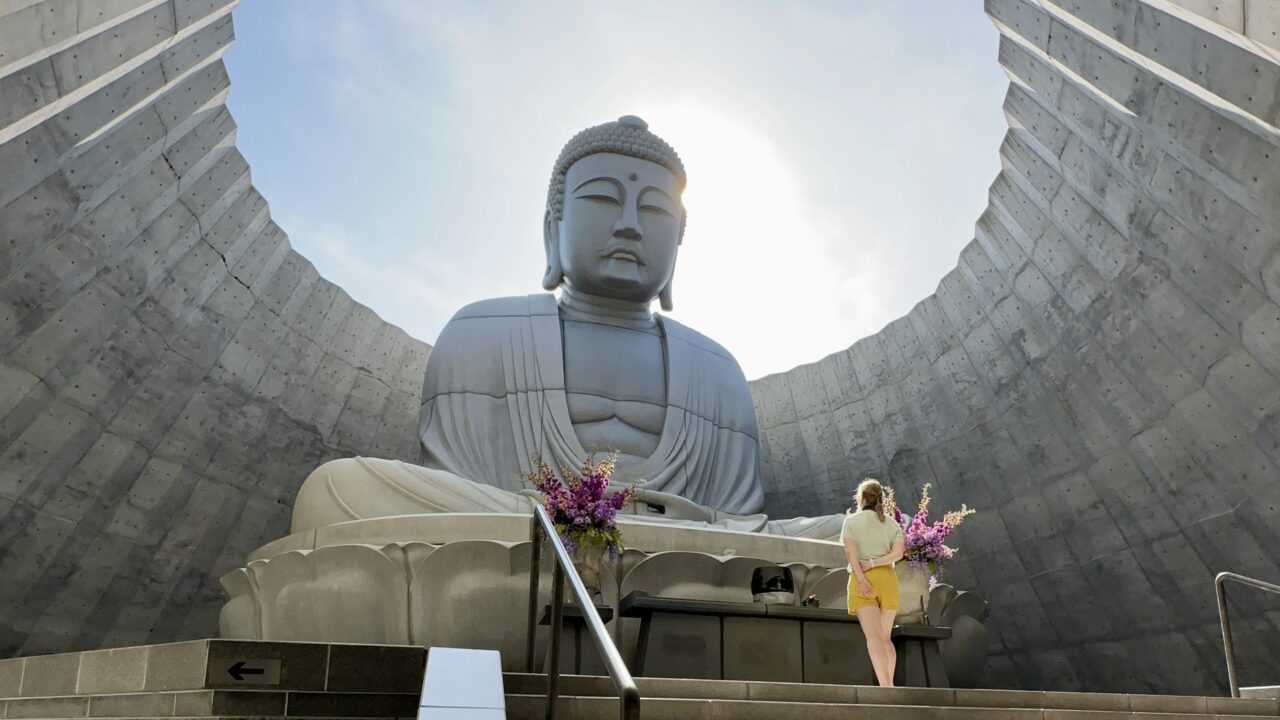
A fun winter activity to try is a half-day ice fishing trip. The bus picked us up from central Sapporo and took us to a frozen lake. Our guide helped us learn how to bait the hook and catch fish. We then ate tempura fish before taking the bus back. There are several companies which lead these tours, one linked below.
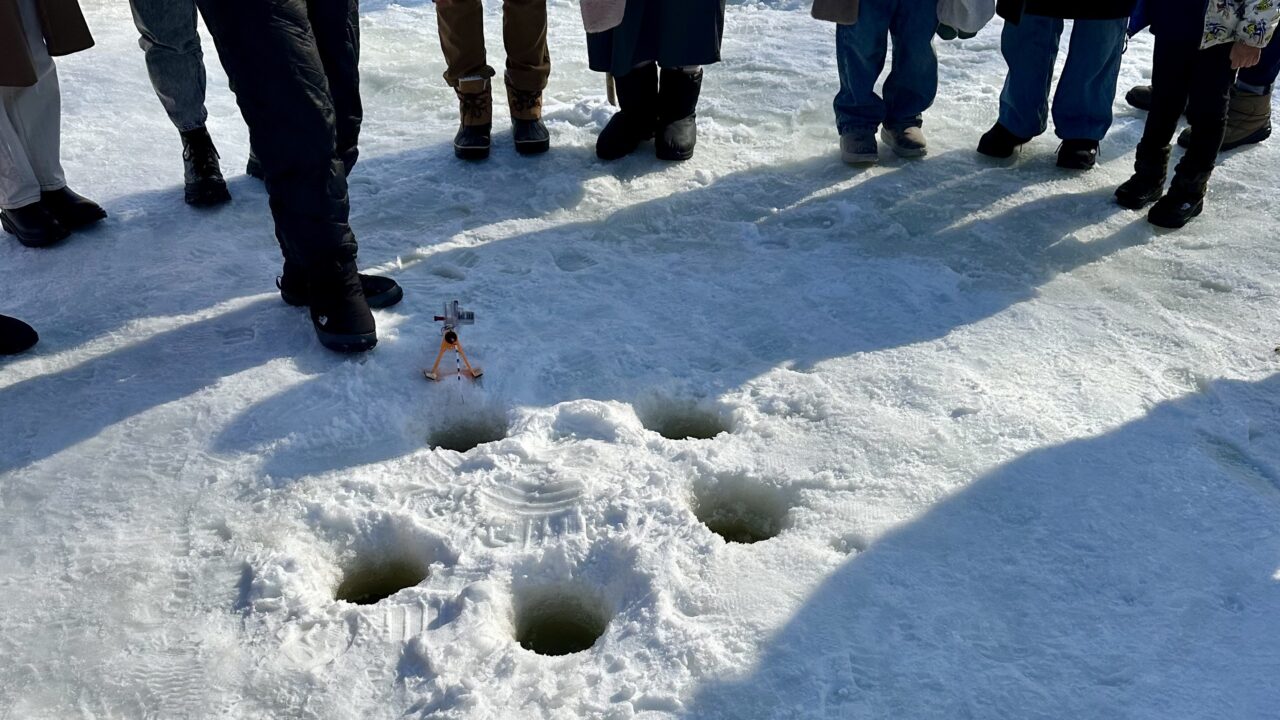
Niseko (ニセコ) is an internationally famous ski resort not too far away from Sapporo. I don’t ski or snowboard, so I can’t say much, but my friends who have gone have liked it, although it seems crowded.
Otaru (小樽) is another small city not too far from Sapporo that has some historical sites and a scenic canal.
Furano (富良野) is a town a few hours from Sapporo that is famous for flower fields, Farm Tomita (ファーム富田) being famous for its lavender fields and ice cream (which I was able to get at the Hill of the Buddha).
Shiretoko National Park, Breathtaking Nature
On the other side of the prefecture, Shiretoko National Park (知床国立公園) is stunning. In the summer or winter, the nature is breathtaking. I went in winter and signed up for winter nature tours. In the morning, we went snowshoeing! I feel like in the US, I’d only seen this in cartoons, but it’s not uncommon in Japan. It was a bit hard to strap them on, but of course the guide helped me, and after a few minutes of adjustment I was walking with ease. The guide showed us bear claw marks on trees (don’t worry, they hibernate in winter), woodpeckers, fox droppings, and live deer. The mountains and cliffs were absolutely gorgeous.
I bought a one-day combo tour package, so after a lunch break I returned to the Shinra (シンラ) meeting point to go walking on sea drift ice! We took a short van ride to the sea and put on winter-grade wetsuits. The guide told us about how to tell if a patch of ice is unsafe, but you stay in the group so there’s not really much to worry about. We ended up walking kind of far into the ocean and it felt so empowering! The guide let us get into the water in between some ice chunks, and because of the wetsuit it didn’t feel that cold and there’s no way to sink. He also showed us some teeny tiny sealife which thrives in this pure northern sea. This was one of the most adventurous experiences of my life!
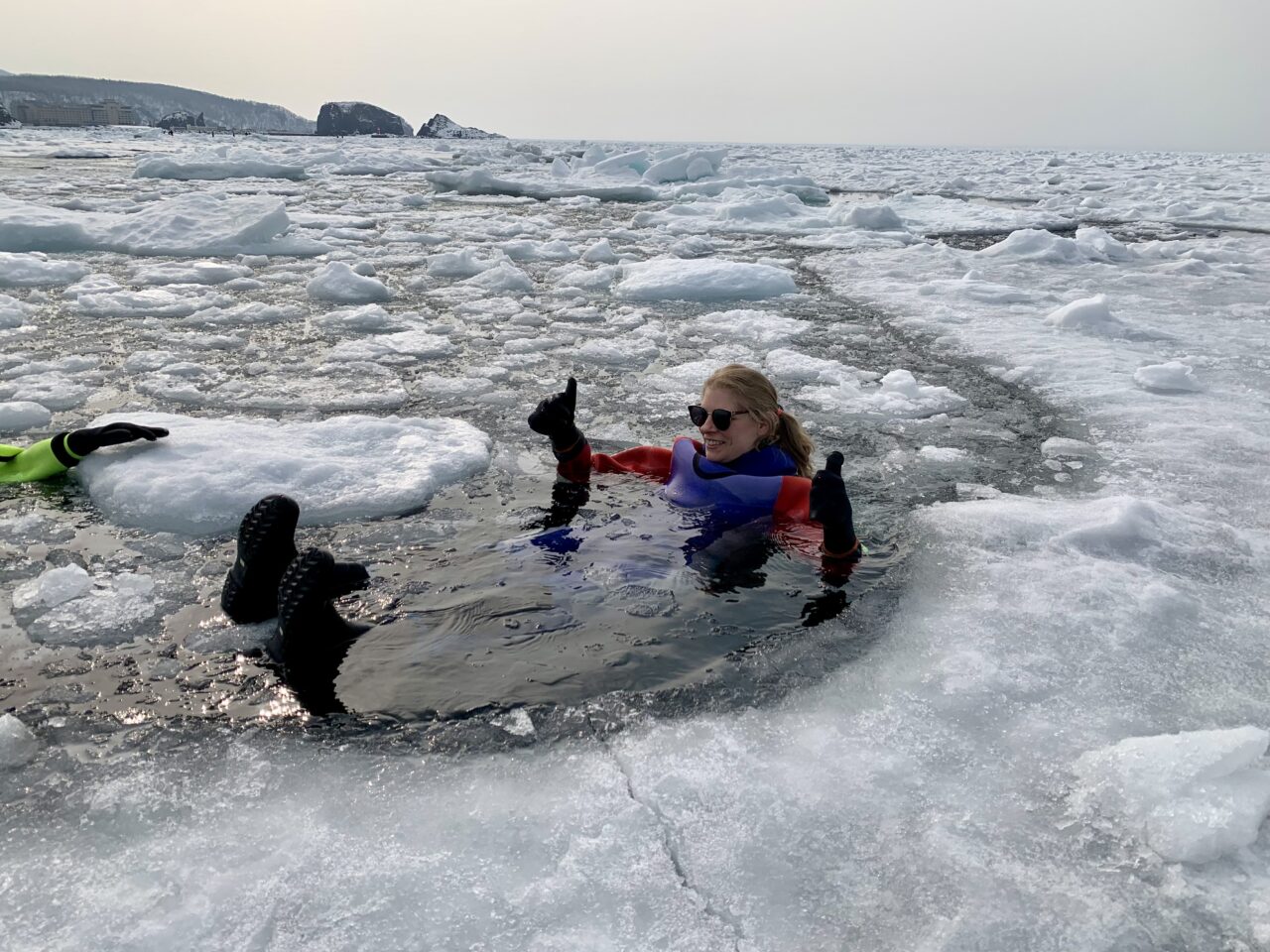
Abashiri, the Town of Sea Ice and Museums
I also enjoyed the small snowy town Abashiri (網走), where you can ride the ice-breaking cruise ship Aurora and take the convenient city bus to a variety of museums. There was the Hokkaido Museum of Northern Peoples (北海道立北方民族博物館), where you can learn about the various peoples and cultures which have thrived in cold-weather climates. The Okhotsk Ryu-hyo (drift ice) Museum (オホーツク流氷館) was an awesome way to learn about the unique environment and wildlife of Hokkaido. Another museum in town I enjoyed was the Abashiri Prison Museum (博物館網走監獄).
Starting in the late 1800’s Japan colonized Hokkaido in order to compete with ever-expanding Russia, resulting in a brutal expansion. Japan sent many soldiers and convicts to Hokkaido to develop the prefecture more rapidly than was realistically possible at the time, leading to extremely harsh working conditions (and deaths). The Abashiri Prison Museum presented this dark history without shying away from facing the brutality, while having really interesting displays.
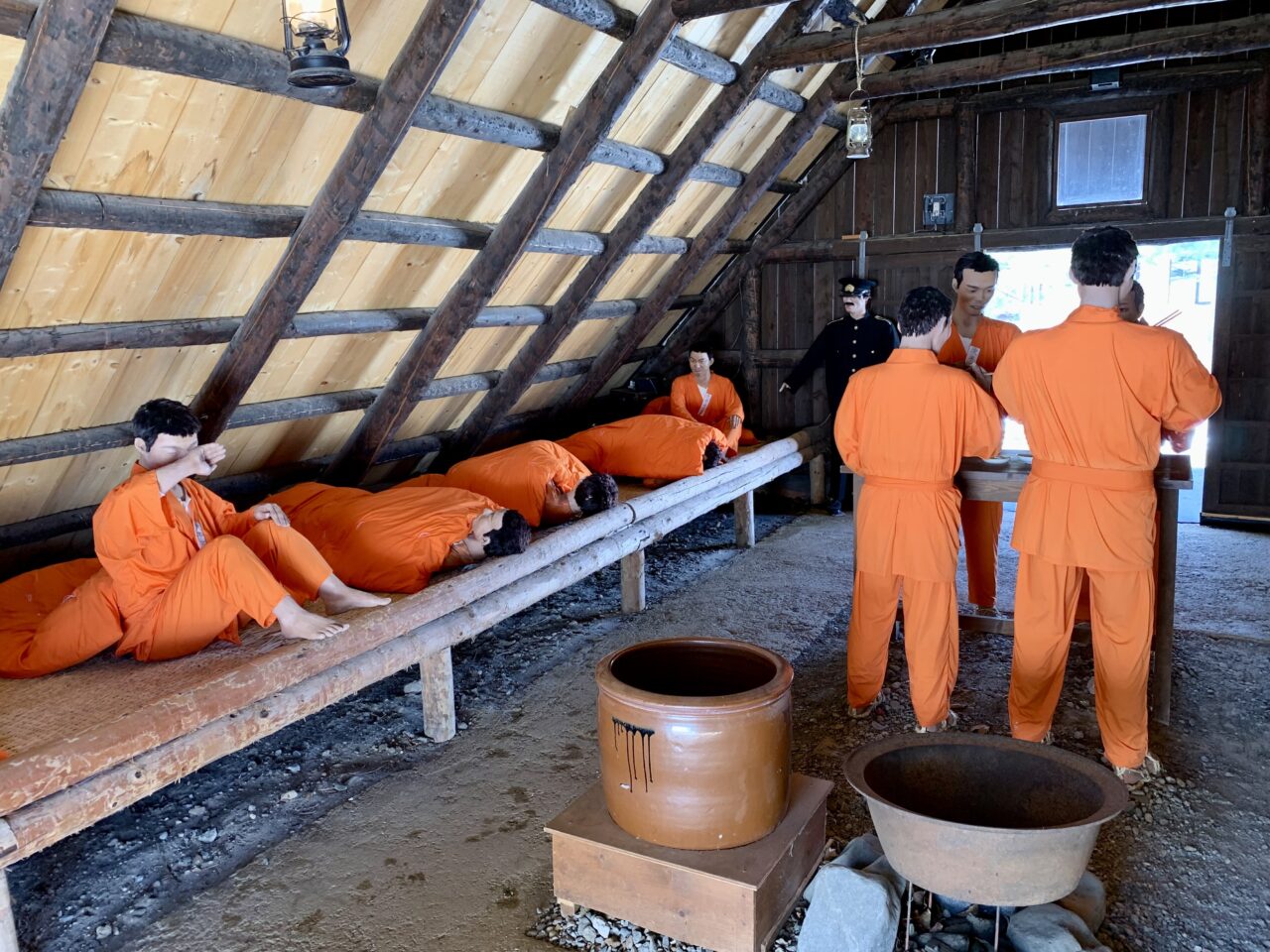
Ainu, Hokkaido’s Native People
Another interesting point about Hokkaido’s history is its native people, the Ainu. People often say Japan is homogenous or not diverse, but one of the many ways Japan is in fact diverse is the native people of Hokkaido and Okinawa. The Ainu people were recognized by the Japanese government as an indigenous people just in 2019 (while the Okinawan people still haven’t been recognized), after being subject to colonization and assimilation in the 19th and 20th Centuries.
You can learn about the Ainu (アイヌ) people and experience their culture in several facilities, so I’ll just mention a few. In Sapporo, there are 2 museums. The Hokkaido Ainu Center (北海道立アイヌ総合センター) is on the upper floor of a government building in the downtown. It’s a bit small but it’s centrally located and can be seen in a short amount of time.
The Ainu Culture Promotion Center (Sapporo Pirka Kotan) or アイヌ文化交流センター in Japanese is much larger with preserved buildings and a variety of displays, and sometimes they host events (I saw a dance performance). It’s within Sapporo city limits, but is about an hour from downtown, accessible via bus. Be sure to check the bus schedule so you don’t miss the last bus going back into town.
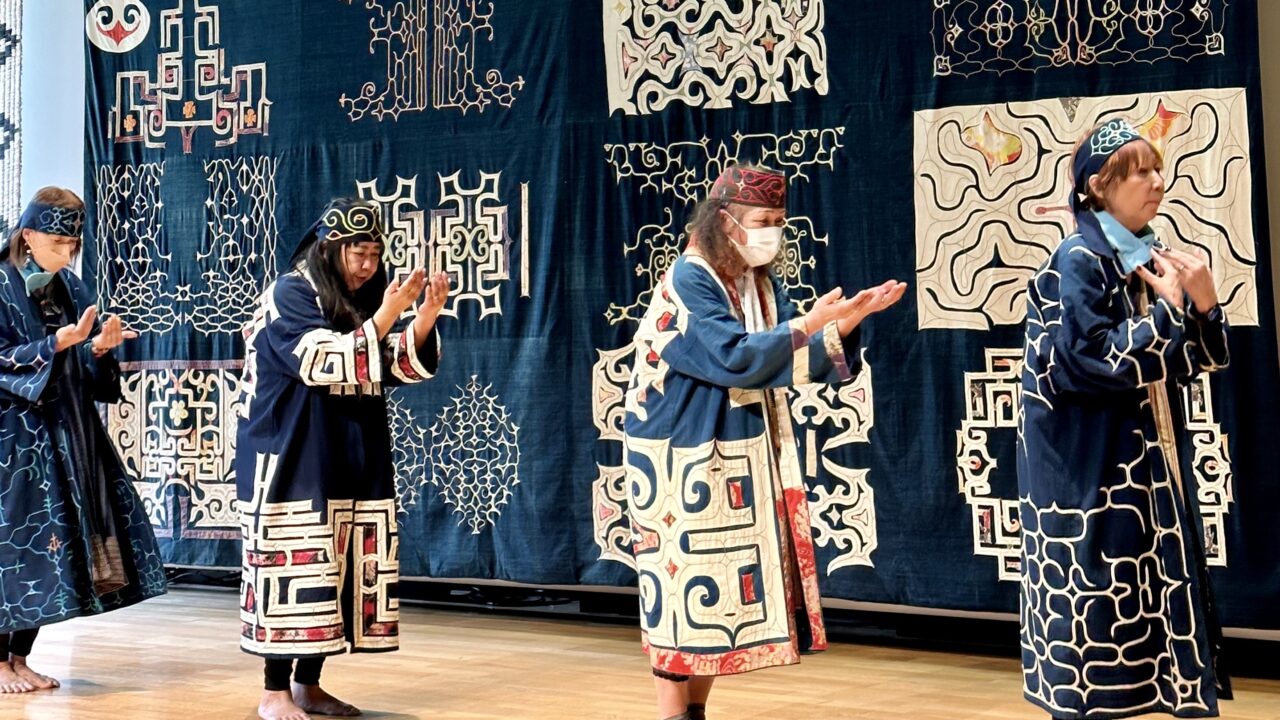
The Upopoy National Ainu Museum and Park (ウポポイ 民族共生象徴空間) is not in Sapporo, but they are offering a day-trip bus from Sapporo until March 2025 (see website). It looks like a large complex with a variety of displays and activities.
Lake Akan (阿寒湖, Akanko), which is on my Japan bucket list, has a lot to offer, including Ainu experiences such as forest walks and cooking at the Ainu village Akanko Ainu Kotan or 阿寒湖アイヌコタン in Japanese (reservation required). This lake is also a great spot to see marimo (マリモ), a round algae ball that looks pretty cool. You can find little fish bowls of them as souvenirs throughout Japan, but the ones growing naturally in this lake are humongous.
Are You Ready for Your Next Adventure?
This post only scratches the surface of what Hokkaido has to offer, but I think this is definitely enough to go off to make for a great trip!
Sapporo can be reached from Tokyo either by shinkansen (bullet train) or by flying into New Chitose Airport (新千歳空港). However, there is no direct shinkansen service to Sapporo. Travelers must first take the shinkansen to Shin-Hakodate-Hokuto Station (新函館北斗駅), which takes about four hours. From there, a transfer to a limited express train or bus is necessary to reach Sapporo, adding approximately three and a half hours to the journey.
When considering transportation options, each has its advantages and disadvantages.
Traveling by shinkansen offers scenic views and a comfortable ride, making it a pleasant experience. However, the total travel time is around eight hours, which can be lengthy. Ticket prices are relatively high, typically around ¥30,000 (approximately $270).
Flying is the fastest option, with direct flights from Tokyo to New Chitose Airport taking about 1.5 hours. This method is generally more time-efficient, but it requires additional time for airport procedures and transfers to Sapporo, which can add up to two hours to the overall travel time. While flights can be cheaper, especially with budget airlines, they are also more susceptible to weather-related delays. Ticket prices for flights can start as low as ¥5,000 (approximately $45) if booked in advance, but this can vary significantly depending on the time of year and the airline. Prices tend to be lower during off-peak seasons and can increase during holidays or busy travel periods.
It’s important to note that both air travel and shinkansen journeys can be affected by weather conditions. For instance, heavy snowfall can lead to flight cancellations and delays, while shinkansen services may also experience disruptions due to adverse weather.
For those considering other towns in Hokkaido, many have their own airports, but they are often located far from Sapporo. Therefore, it’s essential to check the best routes and transportation options to reach these destinations.
In summary, whether you choose to travel by shinkansen or by air, both options offer unique experiences and conveniences. Consider your priorities—whether it’s speed, cost, or the enjoyment of scenic views—when deciding how to embark on your Hokkaido adventure!
Links
In and Around Sapporo
Sapporo Tourism Website https://visit.sapporo.travel/
Sapporo Snow Festival https://www.snowfes.com/en/
Hill of the Buddha https://www.visit-otaru-en.info/
Ice Fishing Tour https://www.viator.com/tours/Hokkaido/Ice-Fishing-on-Barato-River-from-Sapporo/d5558-6614SPK19248
Niseko Ski Resort https://nisekotourism.com/
Otaru Tourism Website https://www.visit-otaru-en.info/
Farm Tomita https://www.farm-tomita.co.jp/en/
Shiretoko National Park
Shiretoko Information https://www.japan.travel/en/spot/2143/
Shinra Tours https://visit-abashiri.jp/en/
Abashiri City
Hokkaido Museum of Northern Peoples https://hoppohm.org/english/
Abashiri Prison Museum https://www.kangoku.jp/multilingual_english/
Okhotsk Ryu-hyo Museum https://visit-abashiri.jp/en/culture/b6adc924f120431ef0d673b91a8be0358fcfcbb0.html
Abashiri Drift Ice Sightseeing & Icebreaker Ship (Aurora) https://www.ms-aurora.com/abashiri/en/
Abashiri Tourism Website https://visit-abashiri.jp/en/
Ainu Experiences
Upopoy National Ainu Museum and Park https://ainu-upopoy.jp/en/2024/12/13/upopoy-one-day-bus-tours/
Ainu Culture Promotion Center (Sapporo Pirka Kotan) https://www.sapporo.travel/en/spot/facility/sapporo-pirka-kotan/
Hokkaido Ainu Center https://www.ainu-assn.or.jp/center.html
Akanko Ainu Kotan https://www.akanainu.jp/en/
